Joyfire Publishing
Website

Info
If you see too much of this symbol  then you need to customise your settings. If you are using the Google Chrome browser, click the top right symbol then you need to customise your settings. If you are using the Google Chrome browser, click the top right symbol  to 'Customise and control Google Chrome'. Next place the cursor on 'More Tools', then 'Encoding' and then click Western (Windows-1252). to 'Customise and control Google Chrome'. Next place the cursor on 'More Tools', then 'Encoding' and then click Western (Windows-1252).
Click here to download
Acrobat Reader!

|
|
|
Space Weather & Energy Driven Evolutionary Change
The Celestial Deluge &
Arrival of Cosmic Fire
|
|
Evolution: Epigenetics, DNA & the Environment
“The traditional idea would be that if you put animals in a new environment they stay basically the same but the way they grow changes because of variables like the amount of food. However, our study proves that the evolutionary effect — the change in the underlying biology in response to the environment — can happen at the same time as the ecological response. Ecology and evolution are intertwined.”
Professor Tim Benton, of the University of Leeds' Faculty of Biological Sciences
|
The conventional view is that DNA carries all our heritable information and that nothing an individual does in their lifetime will be biologically passed to their children. Yet, over the last several decades, researchers studying epigenetics have found that something in addition to DNA alters the expression of genes. Epigenetics, is the field of science that reveals how genes are turned on and off by environmental factors with a multitude of players implicated in regulating genes. These players include proteins, RNA molecules, and chemical “tags” that DNA translation machinery recognizes and allows interaction with the genome. Most importantly, these chemical markers can be both inherited and modified by the environment. To many scientists, epigenetics amounts to a heresy, calling into question the accepted role of DNA sequencing — a concept that previously underpinned the science of biology. Simply, scientists have realised that DNA are not just simple building blocks as previously believed. The following is a brief outline of a major paradigm shift in human understanding, where the impact of environmental change is now expected to be swiftly translated into genetic modification and evolutionary change.
|
Remember the Human Genome Project?
|
Completed in March 2000, the project found that the human genome contains something like 25,000 genes which is hardly enough to make an above average worm. Thus, after spending $3 billion dollars, biologists still did not know much about how the genome is regulated, but there was one very important conclusion and that was DNA is modified by the environment. As the ENCODE project showed, vast quantities of seemingly useless “junk DNA” are expressed, not for making proteins, but for switching genes on and off. Despite hundreds of research papers based on decades of experimental research, this approach to understanding how genes work was largely ignored. It was not considered important until the Human Genome Project failed to supply the answers that would allow DNA to be manipulated and produce the cures that so many hoped would exist for the most intractable diseases that plague mankind. The human epigenome contains an as yet unknowable number of patterns of epigenetic marks, a number so big that leading biologists and epigenetic scientists won't even speculate on it. The number is certainly in the millions. A full epigenome map will require major advances in computing power. When completed, the Human Epigenome Project (already under way in Europe) will make the Human Genome Project look trivial in comparison.
|
|
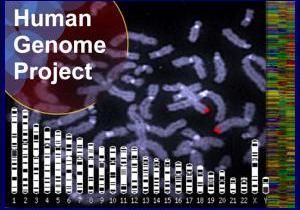
The Human Genome Project Click for more information
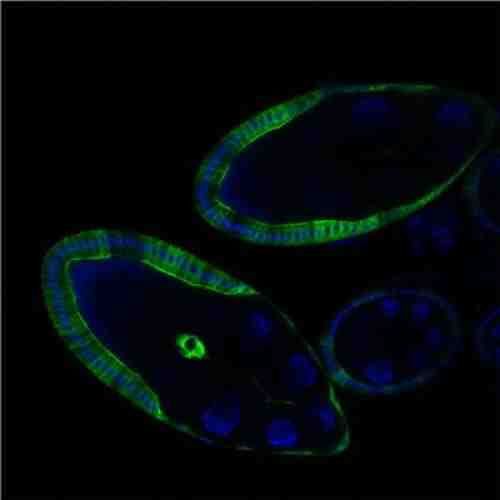
DNA Regulators Rule!
Click for more information
|
Are Genes Our Destiny?
|
In September 2011, the Science Daily article Are Genes Our Destiny? Scientists Discover 'Hidden' Code in DNA Evolves More Rapidly Than Genetic Code, reported a groundbreaking study by researchers at the Salk Institute for Biological Studies. The study, published September 16 in the journal Science, provided the first evidence that an organism's epigenetic code — an extra layer of biochemical instructions in DNA — can evolve more quickly than the genetic code and can strongly influence biological traits. That is major news. Here is a relevant quote:
“Our study shows that it's not all in the genes,” said Joseph Ecker, a professor in Salk's Plant Molecular and Cellular Biology Laboratory, who led the research team. “We found that these plants have an epigenetic code that's more flexible and influential than we imagined. There is clearly a component of heritability that we don't fully understand. It's possible that we humans have a similarly active epigenetic mechanism that controls our biological characteristics and gets passed down to our children.”
Are Genes Our Destiny? Scientists Discover 'Hidden' Code in DNA Evolves More Rapidly Than Genetic Code, Science Daily, 17th September 2011
|
|
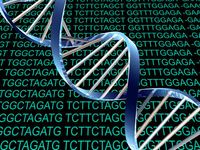
Genes ARE NOT Our Destiny? Click for more information
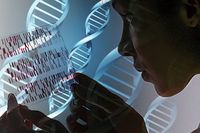
What 'DNA Junk?'
Click for more information on the ENCODE project.
|
Lamarck Remembered
|
Geneticists are being forced to acknowledge that an early naturalist did anticipate modern epigenetics. Darwinists have long disparaged Jean-Baptiste Lamarck (1744-1829), who argued that evolution could occur within a generation or two. He suggested that animals acquired certain traits during their lifetimes because of their environment and choices. The most famous Lamarckian example was he thought giraffes acquired their long necks because their recent ancestors had stretched to reach high, nutrient-rich leaves and then the giraffe's offspring inherited a long neck.
In contrast, Darwin argued that evolution works not through the fire of effort but through cold, impartial selection. Standard Darwinist thinking, states giraffes got their long necks over millennia because genes for long necks had very slowly gained advantage, i.e. a giraffe is more likely to get enough food to survive to reproduce. Lamarck's theory was eventually discredited because scientists misunderstood the issue that acquired characteristics do not necessarily have a genetic basis. Yet epigenetics is now forcing scientists to re-evaluate Lamarck's ideas and the Lamarckian experimentalist Paul Kammerer who was dismissed as fraud. Today Kammerer's observations in the 1920s look suspiciously like newly discovered aspects of epigenetics.
|
|

Jean-Baptiste Lamarck (c. 1802)
Artist: Thévenin
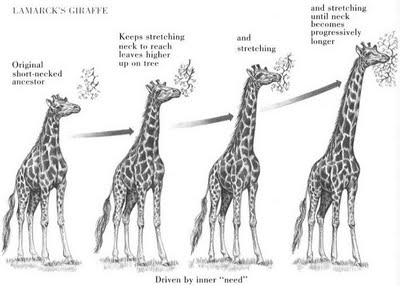
DNA
|
How exactly is DNA related to Evolution Then?
|
Well, the standard theory of evolution – a Neo-Darwinian synthesis of Darwinian's natural selection with Mendelian genetics – states that the only significant genetic change in the form of a mutation is entirely random. The theory states that mutations provide the raw material for evolution but natural selection provides the direction of evolutionary change. This belief has been the central tenet of evolutionary theory for nearly a century.
Well, due to overwhelming evidence, the question of evolution has become a major problem. The evolution of DNA and permanent genetic change by natural selection might not be the final arbiter of evolutionary change. There are now two 'new' discoveries that are upsetting biologists and geneticists. Firstly, epigenetic changes represent a biological response to an environmental stressor. That response can be inherited through many generations via epigenetic marks, but if you remove the environmental pressure, the epigenetic marks will eventually fade, and the DNA code will – over time – begin to revert to its original programming. Well, that's what some scientists current believe as they are still clinging onto the idea that only natural selection causes permanent genetic change. Secondly, there is a mechanism called Somatic Hypermutation – rapid or excessive alterations of the genes. This is a process that allows an organism to use a suitable gene variant to effectively relieve an environmental stress. Simply, it has been shown with bacterium that if it needs help, it can simply cut out some useless genetic material and replace it with something more helpful. That means no evolution at the genetic level at all! This was first revealed in 1988, by the internationally recognized geneticist John Cairns who wrote the paper, “The Origin of Mutants” that was published in the prestigious British journal Nature. Since, this research was a serious challenge to prevailing beliefs of random mutations espoused by Darwin followers, it was immediately condemned as complete heresy. Of course, after 10 years of replication, scientists were forced to admit that an alternative mechanism for evolution existed.
|
|
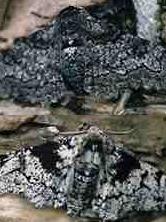
Darwin's moth?
The Peppered moth, which changed its colour from white to black in areas of Britain with heavy pollution, is now reverting to its original appearance. But isn't this moth making a complete mockery of the beliefs of evolutionary biologists as it flips back and forth in decades as environmental conditions change. Surely, this is epigenetics in action!
|
Epigenetics and Evolution
|
Dr. Catherine Suter, who heads the epigenetics laboratory at Sydney's Victor Chang Cardiac Research Institute states:
“It is plausible that natural selection could act on environmentally induced epigenetic changes. If the environment turns off certain genes, that could make them more vulnerable to mutation.”
McCredie J, How epigenetics is changing our fight with disease, ABC Science News, 01 October 2009 Link
As you can see here, the new levels of complexity have seriously disturbed scientists and created some serious doubt about Darwin's theory of evolution. In another article, Some Evolution May Not Depend on Genes the biologist Tia Ghose suggests that epigenetics makes the current theory of evolution inadequate: “some researchers think the modern consensus on evolutionary theory may need to be extended to encompass epigenetics.” But since epigenetics is “incredibly complicated,” evolutionary theory will need an overhaul, not just a patch. In the same article, Laurel Fogarty from Stanford commented on several of the new discoveries:
”Findings like these show clearly that we need to broaden our understanding of how natural selection, genes and non-genetic inheritance interact if we want to fully understand evolution.”
Some Evolution May Not Depend on Genes, Live Science, 4th June 2013
Today, there clear rumblings of disquiet that evolution is not fully understood, nor can it be unless this “incredibly complicated” epigenetic information, which may dwarf the information content of DNA, is understood.
|
|

Expect rapid evolution
Jump et al. say that their results actually demonstrate “that rapid evolution in response to climate change may be widespread in natural populations, based on genetic variation already present within the population,” which likelihood is becoming ever more evident with each new study that investigates the subject. Click image for more info.
|
The Environment Triggers Rapid Evolution
|
An important paper by H. F. Nijhout (BioEssays 12:441, 1990) reveals that “When a gene product is needed, a signal from its environment, not an emergent property of the gene itself, activates expression of that gene.” Simply stated, a gene can not turn itself on or off, it is dependent upon a signal from its environment to control its action.
In the book Tuning the Diamonds: Electromagnetism & Spiritual Evolution, evolutionary changes are associated with the Earth's magnetic field fading and the example is given of what happened 40,000 years ago. Susan Joy Rennison writes:
“During this period, the Earth's magnetic field dropped in strength to about 10% of today's value, and so without the normal protective shield, cosmic radiation penetrated the Earth's atmosphere with ease. The facts reveal that the climate changed and there was a host of evolutionary changes, where numerous species in the Northern Hemisphere either underwent significant change or disappeared altogether.“
Source: Cosmic Radiation and Clouds, Swiss Federal Institute of Aquatic Science and Technology, EAWAG News 58, January 2005, Link
In June 2006, a press release from the University of Oregon stated: “Recent, rapid climate change is driving evolution of animal species”. but it was associated with global warming. Yet, as the above H. F. Nijhout quote tells us, the environment is not dead, it transmits signals, the animals are changing in reponse to a new impetus driving evolutionary change on Earth and has nothing to do with temperature which the authors William E. Bradshaw, professor of biology, and Christina Holzapfel, a biology research associate show. The researchers state:
“Over the past 40 years, animal species have been extending their range toward the poles and populations have been migrating, developing or reproducing earlier,” said Bradshaw. “These expansions and changes have often been attributed to 'phenotypic plasticity,' or the ability of individuals to modify their behavior, morphology or physiology in response to altered environmental conditions.”
However, adds Holzapfel, “phenotypic plasticity is not the whole story. Studies show that over the past several decades, rapid climate change has led to heritable, genetic changes in animal populations.”
Recent, rapid climate change is driving evolution of animal species:
Oregon researcheres say organisms are adapting to altered seasons and not to direct effects of increasing temperatures, Eureka Alert, 8th June 2013
Since this time there have been more groundbreaking developments. From the article, Environmental change triggers rapid evolution we learn:
A University of Leeds-led study, published in the journal Ecology Letters, overturns the common assumption that evolution only occurs gradually over hundreds or thousands of years.
Instead, researchers found significant genetically transmitted changes in laboratory populations of soil mites in just 15 generations, leading to a doubling of the age at which the mites reached adulthood and large changes in population size. The results have important implications in areas such as disease and pest control, conservation and fisheries management because they demonstrate that evolution can be a game-changer even in the short-term.
Professor Tim Benton, of the University of Leeds' Faculty of Biological Sciences, said: “This demonstrates that short-term ecological change and evolution are completely intertwined and cannot reasonably be considered separate. We found that populations evolve rapidly in response to environmental change and population management. This can have major consequences such as reducing harvesting yields or saving a population heading for extinction.”
Although previous research has implied a link between short-term changes in animal species' physical characteristics and evolution, the Leeds-led study is the first to prove a causal relationship between rapid genetic evolution and animal population dynamics in a controlled experimental setting. [...]
Professor Benton said: “The traditional idea would be that if you put animals in a new environment they stay basically the same but the way they grow changes because of variables like the amount of food. However, our study proves that the evolutionary effect – the change in the underlying biology in response to the environment – can happen at the same time as the ecological response. Ecology and evolution are intertwined,” he said.
Source: Environmental change triggers rapid evolution, Phys.Org, Apr 09, 2013
The pile-up of new discoveries is causing some serious disquiet amongst top evolutionary biologists and philosophers. Scientists believe epigenetics makes the current theory of evolution inadequate. The books highlighted here written by two highy respected scientists and scientific philosophers are worthy of serious consideration because they outline exactly the scientific reasons that demands a paradigm shift and a new theory of evolution.
- James A. Shapiro, Evolution: A View from the 21st Century (Upper Saddle River, N.J.: FT Press Science, 2011),
- Thomas Nagel, Mind and Cosmos: Why the Neo-Darwinian Conception of Nature is Almost Surely False , Oxford University Press, USA (September 26, 2012)
The big question is: what about humans?
|
|
|
Joyfire Tour Back
  Next
|
|
 Home
Joyfire Science & Metaphysics Integration
Copyright © 2003 – 2025. All rights reserved.
|
|
Missing Images?
Search Engines
Censor Images
From This Website!
Use Yandex.com!

Has the article disappeared? Try the Way Back Machine
Internet Archive
Click image for link
Geomagnetic storm header Credit: Jüri Voit
|
|

